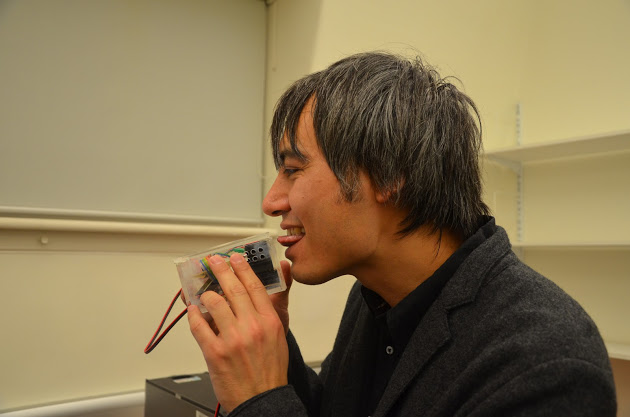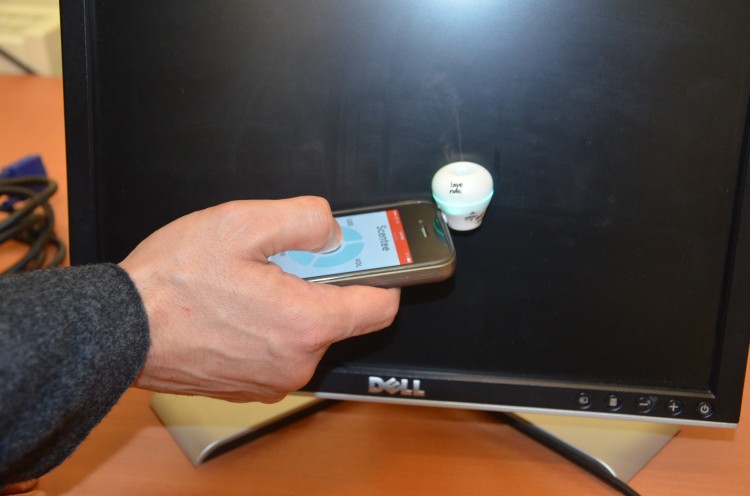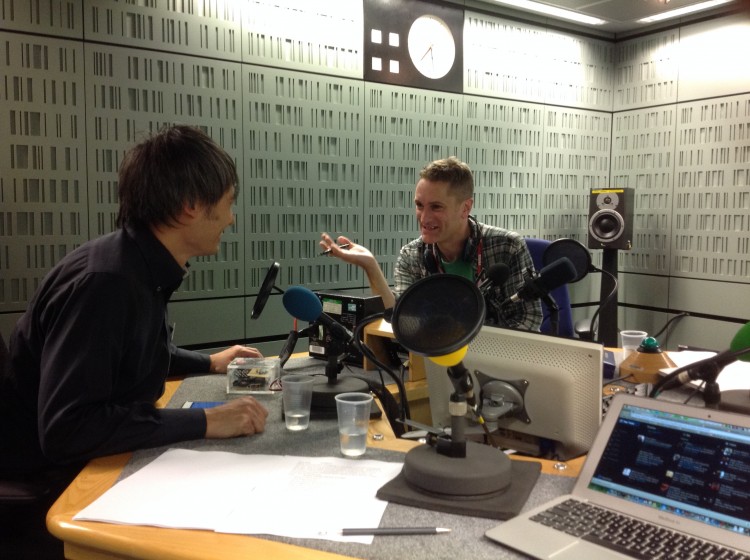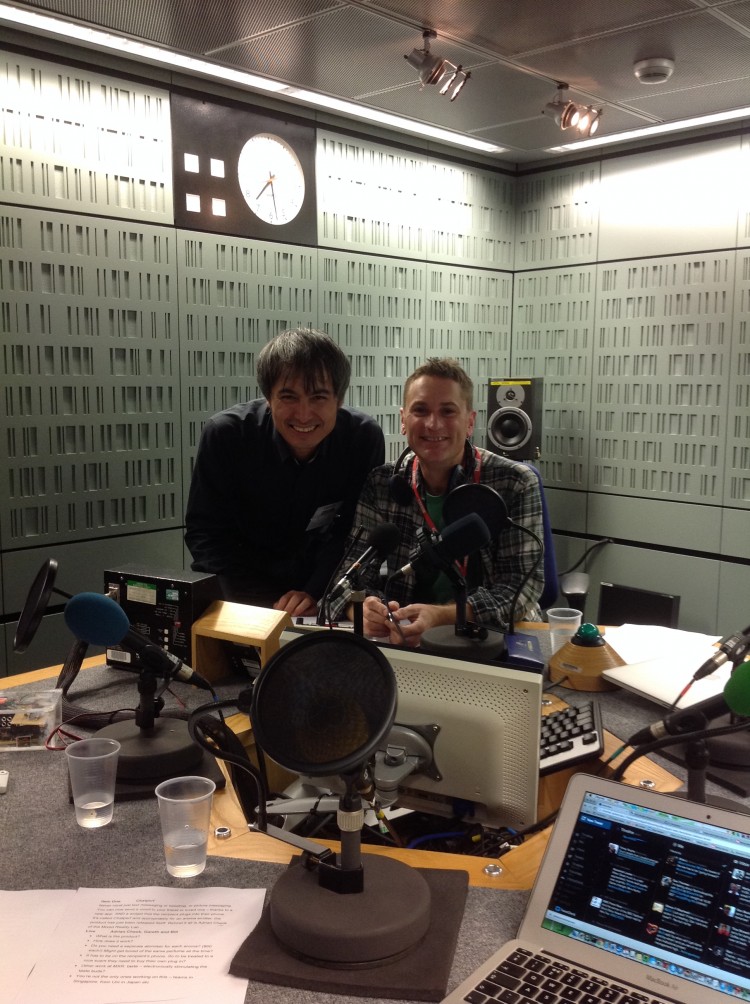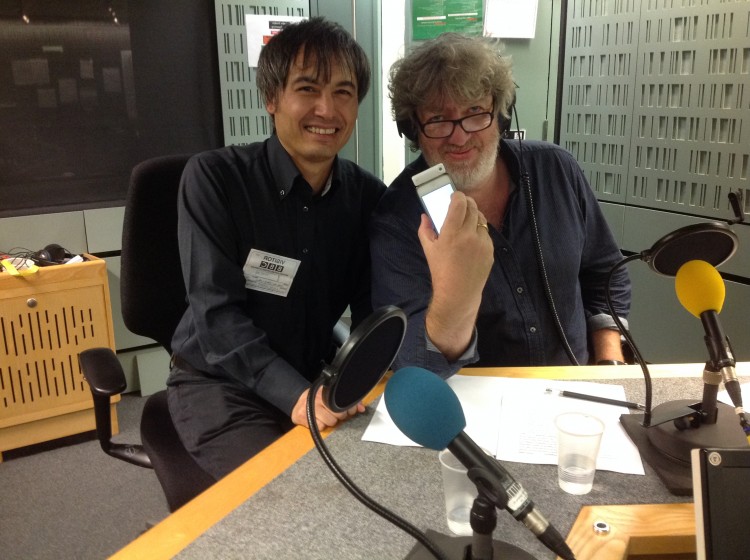Interview article from The Independent:
By Rhodri Marsden
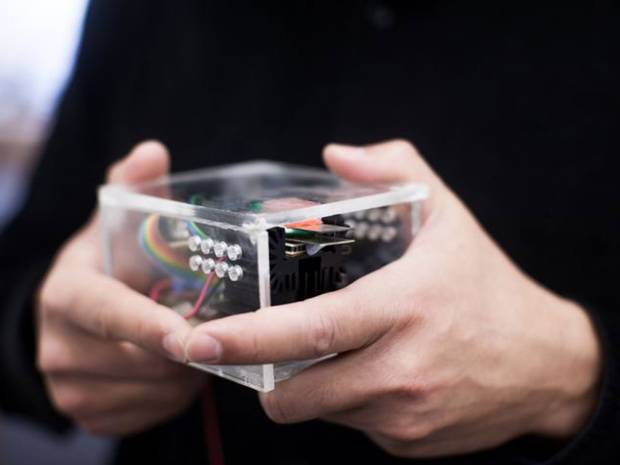
Websites and apps are frequently described by their creators as offering a “rich experience”. The beautiful designs, intuitive layouts and compelling interactivity may well be engaging and satisfying to use, but when they’re hailed as being a “feast for the senses”, it’s evident that they’re a feast for merely two.
Online entertainment is about sight and sound; everything is mediated through a glass panel and a speaker, leaving us well short of being immersed in an alternative reality. But with studies having demonstrated that more than half of human communication is non-verbal, scientists have been working on ways of communicating touch, taste and smell via the internet, and many of those experiments have been gathering pace.
“What do you smell?” asks Adrian Cheok, professor of pervasive computing at City University London. The whiff of melon is unmistakable; it emerged from a tiny device clipped to an iPhone and was triggered by Cheok standing on the other side of the room. “Right,” he says. “These devices have been commercialised in Japan – they’re selling 10,000 units a month – and they’re bringing smells into a social interface.” It’s still early days with this technology; the device I’m holding is similar to an inkjet printer in that it contains a melon “smell sachet”, and when it’s empty you have to buy another one. Nor is it a particularly new concept; in 1999, Wired magazine ran a front cover story about a company called Digiscents that had produced a USB “personal scent synthesiser” for your computer called the iSmell. Digiscents folded two years later. But the technology that failed to excite us back then now looks slightly less gimmicky in the context of modern smartphone usage, with its super- connectivity and emoticons galore.
On the surface, Cheok’s projects are fun, almost throwaway. “I’ve worked on hugging pyjamas,” he says. “They consist of a suit you can put on your body to virtually hug someone, remotely. Then we have these small haptic rings; if I squeeze my ring someone else will feel a squeeze on theirs through the internet – like a remote sensation of hand-holding.” He’s also been working on a device with electrodes that excites taste receptors on the tongue, producing an artificial sensation of taste in the brain. Similar work is also under way at the National University of Singapore, where a team of researchers is constructing a “digital lollipop” that fools the tongue into experiencing sweet, salt, sour or bitter tastes.

In the shorter term, the applications of these devices seem slightly frivolous; Cheok’s rings, for example, are being turned into a product that the music industry plans to sell to fans. “You go to the concert,” he says, “the pop star would send a special message, and if you’re wearing the ring you’d get a squeeze on your finger.” I grimace slightly, and he laughs.
“Fortunately or unfortunately,” he says, “that’s where they’ve decided that the money is – but we need to explore the boundaries of how these things can be used, because scientists and inventors can’t think of all the possibilities. For example, Thomson Reuters has been in touch to ask about using the rings to send tactile information about stock prices or currency movements.”
Our transition to an internet of all the senses is evidently dependent on the breadth of information that can be conveyed from one person to another as a series of zeroes and ones. “You have to find a way of, say, transmitting smell digitally, without using a sachet,” says Cheok.
“So I’m working with a French neuroscientist, Olivier Oullier, on a device which can produce an artificial sensation of smell through magnetic actuation. The olfactory bulb in our nasal cavity that’s responsible for smell can be stimulated by pulsing magnetic fields. So this is about directly exciting the brain’s neural path by bypassing the external sensor – in this case the human body.”
This immediately plunges us into what seems like incredibly futuristic territory, where brains are communicating sensory information directly with other brains across digital networks. But it’s already been demonstrated by the synthetic neurobiology group at MIT (Massachusetts Institute of Technology) that optical fibre can be connected to neurons, and Cheok is excited about where this may lead in the relatively short term. “We will have direct connection to the brain within our lifetime,” he says, “although what level that will be I’m not sure. Physical stimulation of neurons may not produce the effects that we would hope for and predict.”
Few of us can conceive of the pace with which technological power is developing. Ray Kurzweil (author, futurist, and a director of engineering at Google) predicts that by 2025 we’ll have a computer which has the processing power of the human brain, and by 2045 it’ll have the processing power of six billion brains – ie, everyone on the planet. Cheok sees these as hugely important tipping points for society. “If you’re able to download your brain to a computer, there are major philosophical questions that we’ll have to deal with in the next 30 years, such as whether we’re human, or whether we’re computers.”
Society will also have to work out how it’s going to handle the hyper-connectivity of a multisensory internet – bearing in mind that we can already become deeply frustrated by the few kilobytes of information contained within the average overloaded email inbox. Text messages that are not replied to already provoke consternation – what about unreciprocated touches, provocative odours or unwanted tastes?
“Our brains haven’t changed to cope with infinite communication,” says Cheok. “We don’t have a mechanism for knowing when there’s too much, in the way that we do when we’ve eaten too much food. Communication is not just a desire, it’s a basic need – but we’ve gone from being hunter-gatherers in groups of 20 or 30 to being in a world of infinite data. We could literally gorge on communication and be unable to stop. We’ll have to find new norms and new mechanisms, but it’s difficult to predict what they will be.”
Marshall McLuhan, the Canadian philosopher of communication theory, famously used the term “global village” to describe the effect of connected media upon the world’s population; it has become overused, but Cheok believes that new sensory-communication channels will demonstrate how prescient that prediction was. “For most of human history, we didn’t have privacy,” he says. “Everyone knew who was doing what. And these developments will mean that we become more and more open – the end of secrecy, almost bringing us back to the way that life used to be in hunter-gatherer times. Except, of course, it’s now global. A lot more people will know.”
The implications of the work of Cheok and his contemporaries seem to sit midway between exciting and terrifying, but in the shorter term it’s about focusing on relatively mundane objectives, such as emitting multiple odours from a smartphone. “People will get used to this new mode of communication,” says Cheok, “and develop new languages. We don’t yet have a language of smell, or of touch; exactly the same pressure in terms of a touch can have a completely different response in the brain, depending on context. But combined with emotion and the subconscious, it’ll bring a heightened sense of presence. I want us to be able to eat together across the internet. I’ve no idea what that will feel like,” he adds, smiling, “but I’ve always believed that human communication goes far beyond the logical.”

